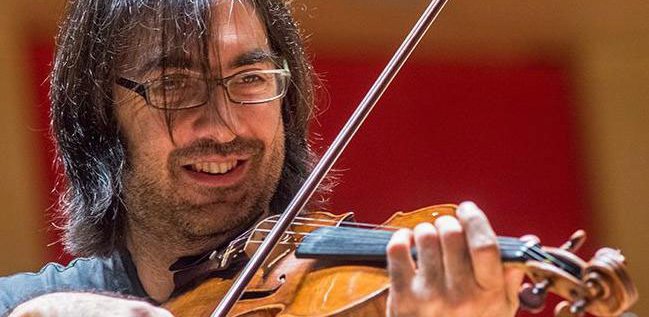Many renowned soloists swap their instruments (or singing) for the conductor’s baton, and let's be honest, they rarely excel and their conducting is average. Still, there are artists – especially early musicians, some of whom are now accomplished conductors – who abandon their instrument and focus exclusively on conducting. And there are other musicians who are both an outstanding performer and a conductor.
Mozart wrote five violin concertos in approximately six years – he was not even twenty years old when he completed the first – after which, however, he wrote none. The reason for this is not known. The violin concertos in A and G major are the best known of the five violin concertos, with the orchestra playing a prominent role in the latter. The way Kavakos played Mozart at the concert at the Palace of Arts was quite impressive, the audience enjoyed some marvellous moments. I really liked the gracious and flexible Allegro opening, the emotional richness of the slow movement was effectively conveyed by Kavakos, the cadenza was played in a wonderful tone, and the evanescent piano marked the end of an elusive dream. The intimate sound of the middle movement was amply demonstrated by the muted strings and the pizzicato of the bass instruments. Each time, the closing Rondo was performed differently by Kavakos. He repeated the passage in a manner that was sometimes elegant, sometimes rustic, but never servile. The gavotte-like music material was played eloquently by the performers, and the musette episode had both humorous and folk features. Having received a big round of applause, Kavakos played a Bach encore.
The Bear Symphony is the opening piece of the Paris Symphonies, a group of six symphonies by Haydn. The composer was paid a substantial fee to write a cycle for an orchestral machinery considered large even at the time: Haydn might just as well have employed ten bassists. The Bear Symphony was nicknamed after a recurring feature from the last movement, which includes appoggiaturas and imitates the tonality of bagpipes. Kavakos’s rendering was outstanding, I especially liked the separations and the precise ideas. In many other cases, conductors only make the beginning of the passage clear; here, however, the closing and elisions offered points of reference. The richness of characters – such as the buzzing first movement, the minor keys of the second movement and the great volume of the timpani – was an important part of the concept. It is worthwhile mentioning that the natural brass instruments evoked the orchestral practice at the time, making the composition out of the ordinary, perhaps even more exciting. If I could highlight one element only, it would be the slowing before the downward chromatic section of the closing movement, and the impressive bright sound afterwards. Mention must be made of the adequate accents of the Allegretto too.
The concert ended with Mussorgsky’s suite entitled Pictures at an Exhibition. This work is quite easy to enjoy, success is guaranteed. In December 2010 Maxim Vengerov, another violinist and conductor, conducted the Mussorgsky piece (Vengerov did not play the violin for a long time because of a shoulder injury). It might be coincidental that Kavakos also chose this particular piece. There are many recordings of the work orchestrated by Ravel, which – not by chance – is permanently played at concert halls. Orchestras can demonstrate their sound, there are numerous solos, and conductors stand to lose nothing. Almost everything has already been said about Pictures at an Exhibition, it is rather challenging to include some variation in the musical solutions of the composition. Kavakos did a good job at structuring the piece inspired by Hartmann’s pictures, he strongly emphasised Ravel’s great and ingenious orchestration (furthermore, we can see Ravel instead of Mussorgsky on a picture in the concert brochure). The Old Castle was played softly and almost affectionately by the orchestra, I really liked the changing volume of the quarrelling in the market, Bydlo was also enormous fun, just like the two closing images. The rendering of the end of the promenade motif, the way we hurried to the first picture, seemed less successful. The other promenades, however, were played very characteristically, always with a different tone and tempo. The Gnome could have been more terrible and horrible with the help of orchestration. In spite of all this, we enjoyed an outstanding interpretation.
This time, I preferred Kavakos as a conductor. He only conducted the Mussorgsky piece using a baton; during the violin concerto it seemed that the Greek violinist felt under pressure not only because he had to focus on playing his instrument, but also because the conducting, a less-known field for him, was still to come.
(A concert by Leonidas Kavakos and the Budapest Festival Orchestra. Palace of Arts, 16 December 2013)
gramofon.hu, Ildikó Lehotka


